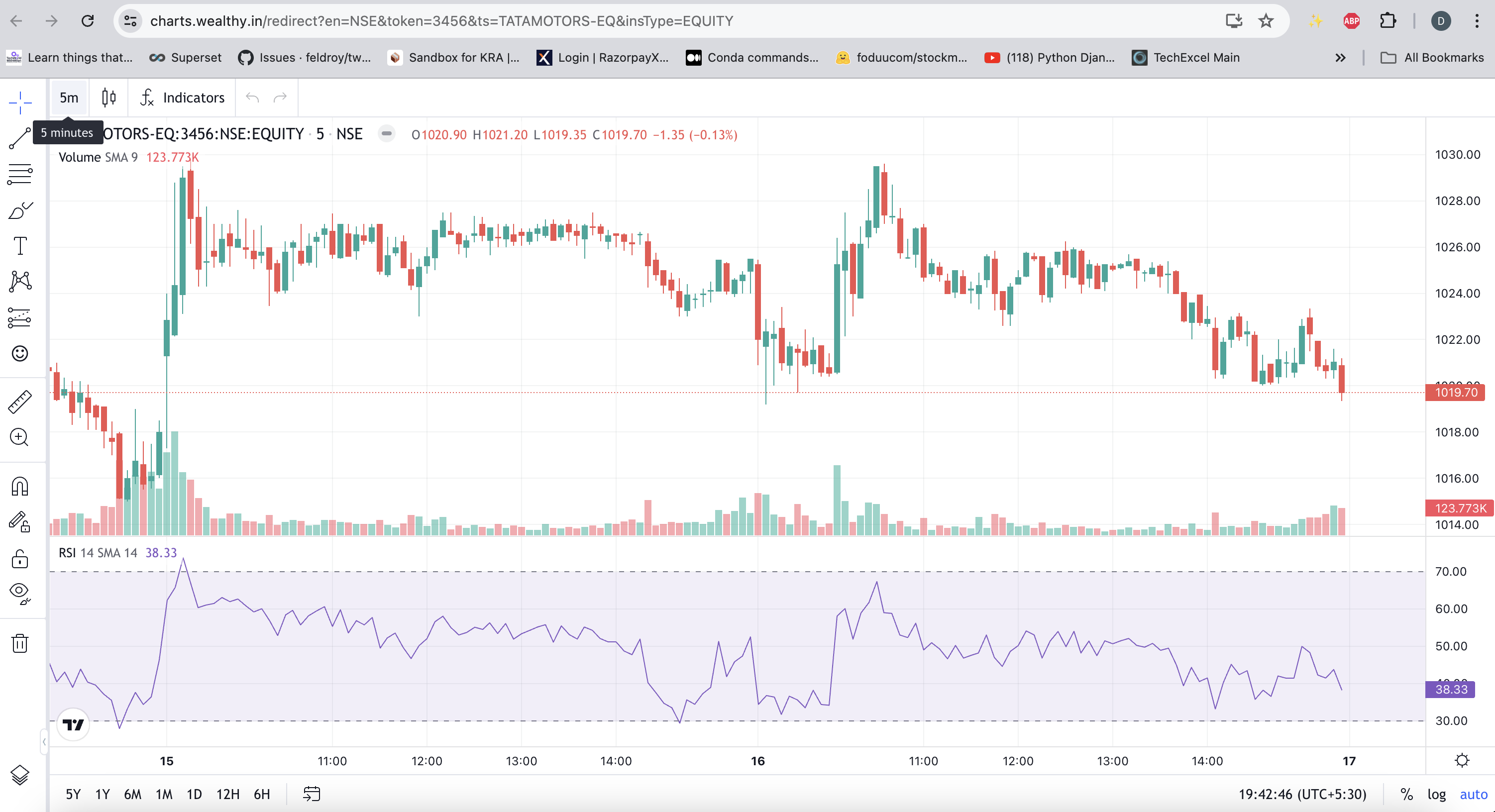Mastering RSI for Profitable Trades
In the ever-evolving world of financial trading, the ability to analyze and predict market movements is invaluable. Among the tools at a trader's disposal, the Relative Strength Index (RSI) stands out for its precision and versatility. This article delves deep into the facets of RSI, markets, and technical analysis, offering both budding traders and seasoned professionals insights and strategies to harness the full potential of RSI.
Introduction to RSI, Markets, Technical Analysis
Introduction
The Relative Strength Index (RSI) is a popular momentum oscillator in technical analysis that helps traders assess the speed and change of price movements. Developed by J. Welles Wilder in 1978, the RSI provides valuable insights into market conditions and potential reversal points. This article will explain how to use the RSI indicator with TradingView on the Wealthy app, a leading stock broking platform in India.
What is RSI?
The RSI is a momentum oscillator that ranges from 0 to 100. It measures recent gains against recent losses to identify overbought or oversold conditions. Generally, an RSI reading above 70 suggests the asset is overbought, while a reading below 30 indicates it is oversold.

How is RSI Calculated?
The RSI is calculated using the following formula:
RSI = 100 - (100 / 1 + RS)
where:
- RS (Relative Strength) is the average gain of the up periods divided by the average loss of the down periods over the last `N` periods.
- N is typically 14, as recommended by J. Welles Wilder, the creator of the RSI.
To calculate RS, use the formula:
RS = Average Gain over N periods / Average Loss over N periods
The average gain or loss is calculated by summing up all gains or losses over the last `N` periods and dividing by `N`.
Using RSI on Wealthy with TradingView
-
Accessing TradingView on Wealthy:
- Open the Wealthy app on your device and navigate to the stock or asset you are interested in.
- Tap on the chart icon to open the TradingView interface within the app.
-
Adding the RSI Indicator:
- Once in TradingView, tap on the 'Indicators' button at the top of the screen.
- Search for 'Relative Strength Index' in the indicators search bar.
- Select the RSI indicator from the list to add it to your chart.
-
Interpreting RSI Values:
- The RSI will appear as a line graph below the main price chart.
- Observe the RSI values:
- An RSI above 70 suggests the asset is overbought and may experience a price correction.
- An RSI below 30 indicates the asset is oversold and could see a price increase.
-
Using RSI for Trading Decisions:
- Identifying Overbought and Oversold Conditions:
- Example: If a stock's RSI rises above 70, consider it overbought and potentially ripe for a sell. Conversely, if the RSI falls below 30, the stock might be oversold and a good buy opportunity.
- Spotting Divergences:
- Bullish Divergence: If the price makes a new low but the RSI forms a higher low, it suggests weakening selling momentum and a potential upward reversal.
- Bearish Divergence: If the price makes a new high but the RSI forms a lower high, it signals weakening buying momentum and a potential downward reversal.
- Generating Buy and Sell Signals:
- Example: A buy signal occurs when the RSI moves above 30 from the oversold region. A sell signal happens when the RSI drops below 70 from the overbought region.
- Identifying Overbought and Oversold Conditions:
Pros of Using RSI
-
Simplicity and Ease of Use:
- RSI is straightforward to understand and apply, making it accessible to both novice and experienced traders.
-
Versatility:
- RSI can be used across different time frames and asset classes, including stocks, forex, commodities, and cryptocurrencies.
-
Helps in Identifying Market Conditions:
- RSI provides clear signals of overbought and oversold conditions, aiding traders in making informed decisions.
-
Divergence Signals:
- RSI divergences can act as early warnings for potential trend reversals, helping traders time their entries and exits.
Cons of Using RSI
-
False Signals:
- In strongly trending markets, the RSI can generate false signals. For instance, in a strong uptrend, the RSI may remain overbought for extended periods, leading to premature sell signals.
-
Lagging Indicator:
- As a momentum oscillator, RSI is based on past price data, which means it can sometimes lag behind the market, providing delayed signals.
-
Limited Use in Isolation:
- Relying solely on RSI without considering other indicators or market context can lead to suboptimal trading decisions. Combining RSI with other tools, like moving averages or volume indicators, can provide a more comprehensive analysis.
-
Subjectivity in Interpretation:
- Different traders may interpret RSI signals differently, leading to varied trading outcomes. The effectiveness of RSI can depend on the trader's experience and strategy.
Conclusion
The Relative Strength Index (RSI) is a powerful tool for traders, offering insights into market momentum, overbought and oversold conditions, and potential trend reversals. Using the RSI with TradingView on the Wealthy app enhances its utility, allowing traders to make informed decisions. While RSI has its limitations, its simplicity and versatility make it a valuable addition to any trading strategy. By combining RSI with other technical indicators and sound risk management practices, traders can improve their chances of success in the markets.